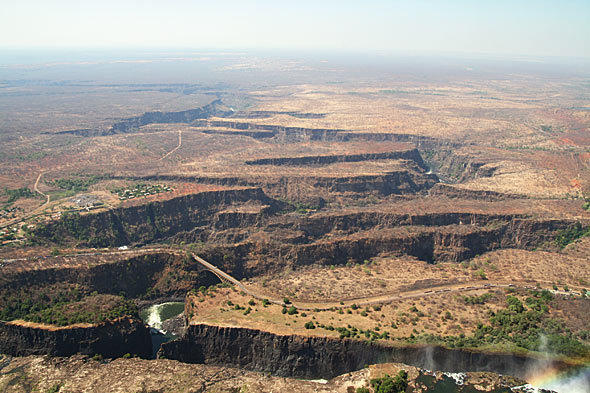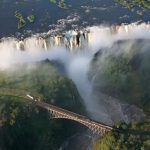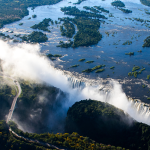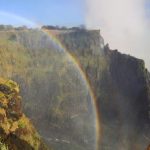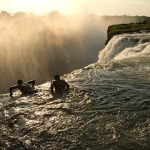You’ve probably heard of Victoria Falls, right? Well, prepare to be fascinated by the remarkable geology behind this natural wonder. In this article, we’ll take a closer look at the incredible formation of Victoria Falls and how millions of years of erosion have contributed to its awe-inspiring beauty. From the Zambezi River carving its way through the Earth’s crust to the unique basalt plateau that stretches for miles, the geology of Victoria Falls is a testament to the forces of nature and the wonders they can create. Get ready to be amazed!
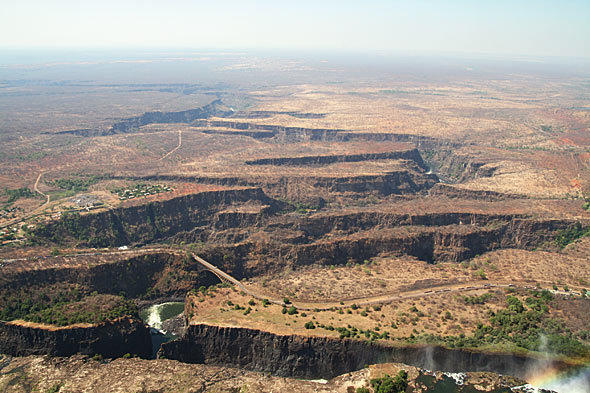
Formation of Victoria Falls
Victoria Falls, one of the most awe-inspiring natural wonders of the world, is a result of various geological processes that have taken place over millions of years. The formation of Victoria Falls can be attributed to two main factors: Volcanism and the subsequent downcutting of the Zambezi River.
Volcanism and Basalt Plateau Formation
Millions of years ago, intense volcanic activity occurred in the region that is now known as southern Africa. Massive volumes of lava erupted from deep within the Earth’s crust, resulting in the creation of a vast basalt plateau. This basalt plateau, known as the Karoo Basalt, covers large parts of southern Africa, including the area surrounding Victoria Falls.
The Karoo Basalt was formed from successive lava flows, which built up layer upon layer of solidified lava. Over time, these lava flows spread out, covering the underlying landscape and forming a thick layer of basalt rock. It is this layer of basalt that serves as the foundation for Victoria Falls.
Downcutting of the Zambezi River
The formation of Victoria Falls was further influenced by the powerful forces of erosion, primarily carried out by the Zambezi River. As the Zambezi River flowed across the Zambezi Plateau, it encountered the resistant basalt rock of the Karoo Basalt. The river began to downcut, gradually carving out a deep channel through the plateau.
Over time, the relentless force of the flowing water, combined with the natural processes of erosion and weathering, caused the Zambezi River to cut further into the basalt rock. The river’s relentless force eventually created a deep and narrow gorge, leading to the formation of Victoria Falls, which is situated at the edge of the basalt plateau where the Zambezi River abruptly drops off into the gorge.
Basalt Columns
One of the most fascinating geological features of Victoria Falls is the presence of basalt columns. These hexagonal-shaped columns add to the natural beauty and uniqueness of the falls.
Formation of Basalt Columns
The formation of basalt columns begins during the cooling and solidification of lava. When the lava flows from volcanic eruptions, it cools down and contracts, creating cracks that divide the solidified lava into distinct columns. These cracks, known as cooling joints, form perpendicular to the cooling direction of the lava.
As the lava cools further, the contraction process creates more cooling joints, resulting in the formation of hexagonal-shaped basalt columns. The uniformity of the columns is a result of the stress distribution and the natural structure of cooling lava.
Hexagonal Patterns
The basalt columns at Victoria Falls exhibit a striking hexagonal pattern, with each column perfectly aligned with its surrounding neighbors. This regular pattern is a result of the geometric properties of hexagons, which are the most efficient shape for dividing a plane into equal-sized areas with the least amount of perimeter.
The hexagonal pattern of the basalt columns at Victoria Falls adds a sense of symmetry and order to the natural landscape, enhancing the awe-inspiring beauty of the falls.
Column Heights
The height of the basalt columns at Victoria Falls varies, with some reaching impressive heights of up to 30 meters. The varying column heights contribute to the dynamic and dramatic appearance of the falls, creating a sense of cascading water as it tumbles down the rock face.
The height of the basalt columns is influenced by several factors, including the thickness of the basalt flow, the cooling rate of the lava, and the depth at which the lava solidified. These factors combine to create a diverse array of heights and column shapes, resulting in the visually stunning spectacle that is Victoria Falls.
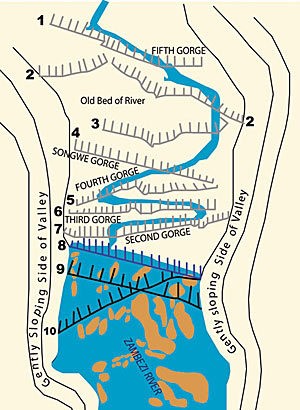
Batoka Gorge
The Batoka Gorge is a natural feature that adds to the geological appeal of Victoria Falls. It is a deep and narrow canyon that was formed as a result of the erosive forces of the Zambezi River.
Formation of the Gorge
The formation of the Batoka Gorge can be attributed to the continuous erosive action of the Zambezi River. As the river flowed across the basalt plateau, it gradually eroded the rock, carving out a deep and narrow gorge over millions of years.
The erosive processes that shaped the Batoka Gorge include hydraulic action, where the force of the water dislodges rock particles, as well as abrasion, where the rock fragments carried by the river act as agents of erosion, wearing down the sides of the gorge.
Influence on Victoria Falls
The presence of the Batoka Gorge has a significant influence on the formation and character of Victoria Falls. As the Zambezi River reaches the edge of the basalt plateau, it plummets into the gorge, resulting in the breathtaking cascade of water that is characteristic of Victoria Falls.
The gorge acts as a natural outlet for the water, allowing for the spectacular display of cascading water, mist, and spray that can be seen from various viewpoints around Victoria Falls. The height of the falls, combined with the depth of the gorge, creates a sense of immense power and grandeur, leaving visitors in awe of nature’s majesty.
Hydroelectric Power Potential
The Batoka Gorge also holds significant potential for hydroelectric power generation. The natural topography and flow of the Zambezi River in the Batoka Gorge make it an ideal location for the construction of hydroelectric power plants.
Several hydropower projects are currently being developed in the area, with the potential to generate large amounts of clean, renewable energy. The harnessing of the Zambezi River’s power not only provides electricity to support local communities but also contributes to the overall sustainable development of the region.
Water Erosion
Water erosion plays a crucial role in shaping and continuously changing the landscape of Victoria Falls. The constant flow and force of the Zambezi River have resulted in remarkable geological features and ongoing erosion processes.
Effects of Water Erosion
Water erosion at Victoria Falls has had several effects on the landscape. The erosive action of the flowing water has created the deep channel of the Batoka Gorge and played a significant role in the recession of the falls over time.
The constant impact of the water against the basalt rock has gradually worn away the softer layers, creating the impressive abyss that gives Victoria Falls its distinctive appearance. The continuous erosion also leads to the constant evolution of the falls, as the water carves out new channels and shapes the landscape.
Creation of the Falls
The creation of Victoria Falls is a direct result of water erosion. Over millions of years, the relentless force of the Zambezi River’s flow, coupled with the natural processes of hydraulic action and abrasion, has gradually eroded the basalt rock.
As the river eroded the basalt rock, it formed a deep channel that eventually led to the creation of the falls. The water plunges over the edge of the basalt plateau into the Batoka Gorge, shaping the majestic and awe-inspiring Victoria Falls that we see today.
Continual Recession
The erosion and recession of Victoria Falls are ongoing processes that continue to shape the geological features of the area. As the water erodes the softer layers of the basalt rock, the falls gradually move upstream, resulting in the constant erosion and retreat of the waterfall.
The continual recession of Victoria Falls is a testament to the power and persistence of water erosion. Over time, the falls have moved several kilometers upstream from their initial location, leaving behind a unique geological record of their ever-changing nature.
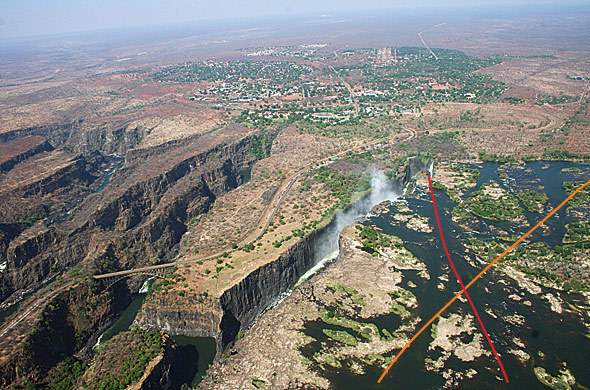
Land Erosion
In addition to water erosion, land erosion also plays a significant role in the geological processes at Victoria Falls. Various factors contribute to land erosion, including deforestation and agriculture.
Factors Contributing to Land Erosion
Deforestation and agriculture are major factors contributing to land erosion around Victoria Falls. The clearing of vegetation, primarily for agriculture and human settlement, disrupts the natural balance of the ecosystem and exposes the soil to the erosive forces of wind and water.
Without the protective cover of vegetation, soil erosion occurs more easily, especially during heavy rainfall events. The removal of trees and vegetation also disrupts the water cycle, reducing the overall ability of the landscape to absorb and retain water, further exacerbating the erosive processes.
Deforestation and Agriculture
The rapid increase in population and the demand for agricultural land in the region have led to extensive deforestation and conversion of natural habitats into farmland. The clearing of forests not only removes vital habitats for numerous plant and animal species but also has significant consequences for the stability and integrity of the landscape.
The removal of trees and vegetation weakens the soil structure, making it more prone to erosion by wind and water. It also results in increased sedimentation in the rivers and streams, negatively impacting water quality and aquatic ecosystems.
Impact on Victoria Falls
The land erosion caused by deforestation and agriculture has a direct impact on the geological processes and overall health of Victoria Falls. The increased sedimentation in the rivers and streams reduces the clarity of the water and alters the natural flow patterns, affecting the appearance and integrity of the falls.
Furthermore, the removal of vegetation leads to increased soil erosion, which can result in the destabilization of the surrounding landscape. The loss of fertile topsoil also has implications for agriculture, as it reduces the productivity of the land and affects the livelihoods of local communities.
Livingstone Island
Livingstone Island is a small landmass located on the edge of Victoria Falls and offers a unique perspective on the geological features of the area.
Formation of Livingstone Island
Livingstone Island was formed through the continuous erosive action of the Zambezi River. As the river eroded the basalt plateau, it created a small, isolated landmass adjacent to the falls.
The island is named after the renowned Scottish explorer, David Livingstone, who was the first European to view and document Victoria Falls. Livingstone’s exploration and discovery of the falls played a pivotal role in raising awareness of this natural wonder and attracting attention to its geological significance.
Unique Geological Features
Livingstone Island provides visitors with a close-up view of the geological features of Victoria Falls. From the island, visitors can witness the immense power of the falling water, feel the mist and spray on their faces, and gain a deeper appreciation for the forces of nature at work.
The exposed basalt rock formations on the island allow for a detailed observation of the hexagonal basalt columns and the erosive effects of the Zambezi River. Walking through the island, visitors can explore the diverse geological features and gain insights into the processes that shaped Victoria Falls over millions of years.
Accessibility and Tourism
While Livingstone Island offers a remarkable experience of Victoria Falls’ geological wonders, it is accessible only during certain times of the year when the water levels are lower. During the dry season, the Zambezi River’s flow decreases, allowing visitors to access the island and witness the magnificence of the falls up close.
Livingstone Island is a popular tourist destination, attracting visitors from around the world who are eager to explore the geological wonders of Victoria Falls. Guided tours provide educational and insightful experiences, enriching visitors’ understanding of the geological processes that have shaped this natural wonder.
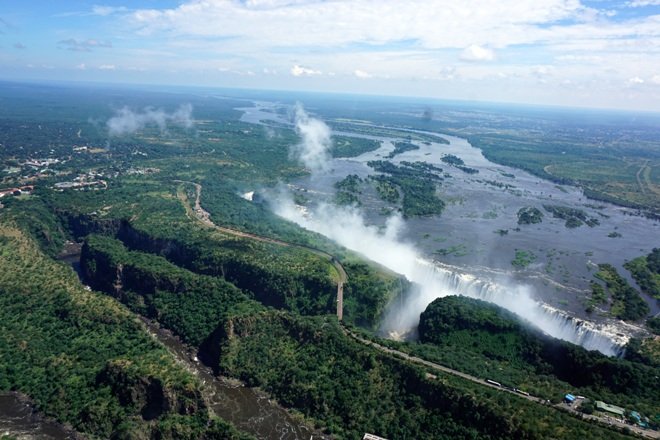
Devil’s Pool
Devil’s Pool is a natural rock pool located on the edge of Victoria Falls, offering a thrilling and adventurous experience for visitors.
Origin and Formation
Devil’s Pool originated from the erosive action of the Zambezi River over millions of years. As the river eroded the basalt rock, it created a shallow and enclosed pool near the edge of the falls. The pool is naturally formed by the rock formations and acts as a natural infinity pool with stunning views of the falls.
The name “Devil’s Pool” stems from the daring nature of the experience, as visitors can swim right up to the precipice of the falls, with only a natural rock barrier separating them from the churning waters below.
Risks and Safety Measures
Due to the inherent risks involved in swimming at the edge of a waterfall, visiting Devil’s Pool requires caution and the guidance of experienced guides. Safety measures are in place to ensure the well-being of visitors, including the presence of trained guides, safety ropes, and strict supervision.
Visitors are advised to follow the instructions of the guides and adhere to safety protocols. While the experience offers an exhilarating opportunity to get up close and personal with the falls, it is crucial to prioritize safety at all times.
Popularity among Tourists
Despite the risks involved, Devil’s Pool has gained immense popularity among adventurous tourists seeking a unique and adrenaline-filled experience. The opportunity to swim at the edge of one of the world’s most spectacular waterfalls is undoubtedly a once-in-a-lifetime adventure.
Guided tours to Devil’s Pool allow visitors to swim in the pool, take photos, and immerse themselves in the awe-inspiring power of Victoria Falls. The popularity of Devil’s Pool highlights the fascination and desire of individuals to connect with nature and explore its wonders in daring and extraordinary ways.
Rainbow Falls
Rainbow Falls is a mesmerizing natural phenomenon that adds an extraordinary touch to the already breathtaking Victoria Falls.
Formation of Rainbow Falls
Rainbow Falls is formed through the interaction of sunlight, water droplets, and the mist created by the falling water of Victoria Falls. As the sunlight passes through the water droplets in the air, it is refracted and dispersed, creating a spectrum of colors that form a magnificent rainbow.
The constant cascade of water at Victoria Falls ensures a consistent and abundant supply of mist, providing ideal conditions for the formation of vibrant rainbows. The changing angles of the sunlight and the ever-present mist contribute to the dynamic and constantly shifting display of colors.
Optimal Viewing Conditions
The optimal viewing conditions for Rainbow Falls occur during the midday hours when the sun is higher in the sky. At this time, the angle of the sunlight creates a larger arc of the rainbow, allowing for a more vivid and expansive display of colors.
Visitors can witness the spectacular Rainbow Falls from various viewpoints along the edge of Victoria Falls. The continuous flow of water, combined with the sunlight and mist, creates a captivating and enchanting spectacle that adds to the overall magnificence of Victoria Falls.
Spectacular Rainbow Effects
The rainbow effects at Victoria Falls are not limited to the main falls alone. With the numerous smaller cascades and the mist generated by the falling water, rainbows can be seen forming and dissipating throughout the entire length of the falls.
The interplay of light, mist, and water creates a magical and ethereal ambiance, transforming Victoria Falls into a living canvas of vibrant colors. As visitors explore the different viewpoints and vantage points, they are treated to a mesmerizing display of rainbows, making their visit to Victoria Falls truly unforgettable.
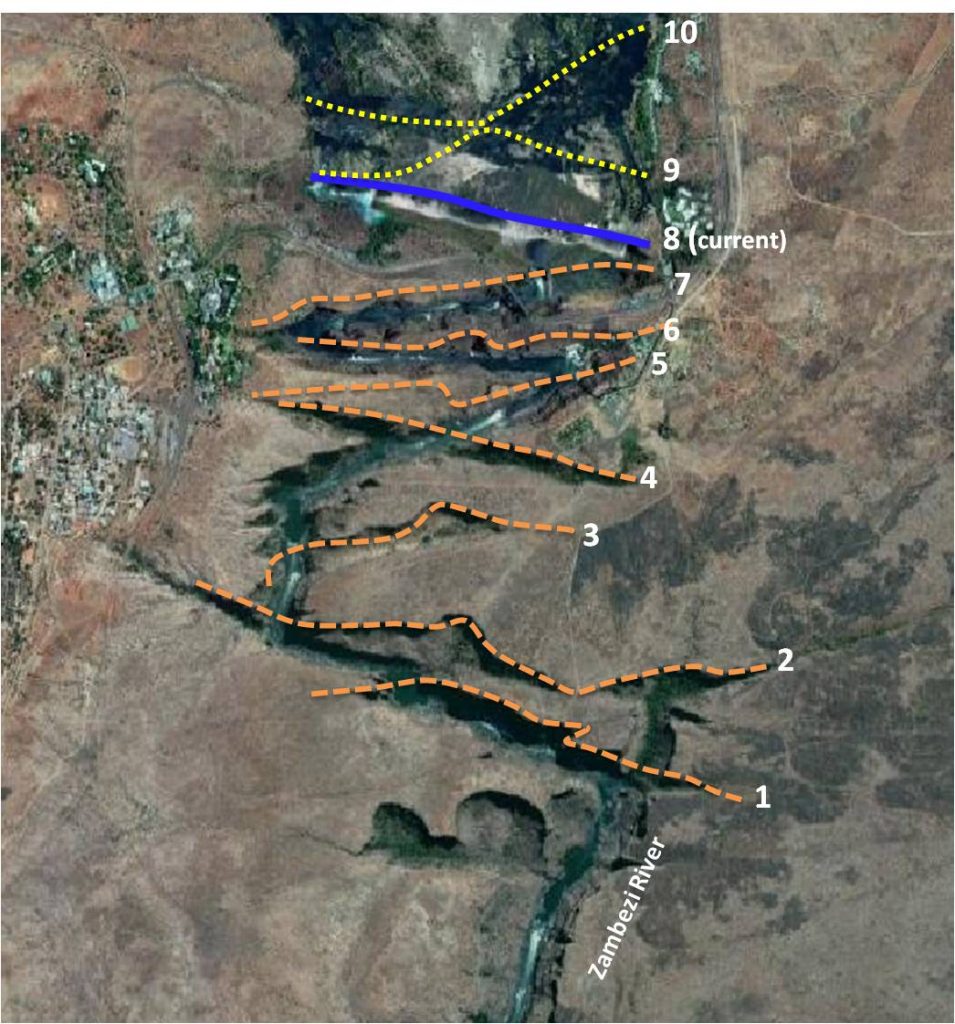
Victoria Falls Bridge
The Victoria Falls Bridge is an iconic engineering marvel that spans the Zambezi River, connecting Zimbabwe and Zambia. It holds historical significance and adds to the geological appeal of the Victoria Falls area.
Construction and Design
The Victoria Falls Bridge was constructed between 1904 and 1905 during the colonial era. It was designed by George Andrew Hobson, an eminent civil engineer, and was built by the British South Africa Company to facilitate transportation and trade in the region.
The bridge’s design incorporates steel trusses supported by stone piers, providing a sturdy and durable structure that has withstood the test of time. The intricate lattice framework adds to the architectural beauty of the bridge, making it an impressive sight against the backdrop of the falls.
Structural Considerations
The construction of the Victoria Falls Bridge required careful consideration of the natural environment and the geological features of the area. The bridge had to be built at a precise location that provided optimal support and stability while minimizing environmental impact.
The stone piers were strategically positioned to withstand the powerful forces of the Zambezi River and the occasional flooding that occurs during the rainy season. The engineering feat of constructing the bridge demonstrated the ingenuity and technical expertise of the time.
Historical Significance
The Victoria Falls Bridge holds historical significance, symbolizing the colonial era and the perseverance of human engineering in the face of formidable natural obstacles. The bridge played a vital role in connecting the various regions of southern Africa and facilitating trade and transportation.
Today, the Victoria Falls Bridge stands as an important landmark and a testament to the geological processes and human achievements that have shaped the Victoria Falls area. It serves as a symbol of the enduring relationship between man and nature, offering breathtaking views and inspiring awe in all who visit.
Geological Time Scale
The formation and evolution of Victoria Falls span millions of years, placing it within the context of the geological time scale.
Era and Period of Formation
The formation of Victoria Falls occurred during the Cenozoic Era, specifically in the Quaternary Period. This period stretches from approximately 2.6 million years ago to the present day and is characterized by the dominance of the current ice age and the development of hominids.
The geological processes that shaped Victoria Falls occurred within the last few million years, making it a relatively young natural wonder in geological terms.
Changes over Millions of Years
Over the course of millions of years, Victoria Falls has undergone significant changes. The erosion and recession of the falls have resulted in the formation of the Batoka Gorge and the continuous shifting of the falls’ location upstream.
The land surrounding Victoria Falls has also experienced dramatic alterations due to factors such as water and land erosion, deforestation, and human activities. These changes are a testament to the power of geological processes and the ever-evolving nature of the Earth’s landscapes.
Geological Evolution
The geological evolution of Victoria Falls continues to this day, with ongoing erosion and land transformation processes shaping the landscape. The forces of water and land erosion, combined with human activities, leave their mark on the geological features of the area, creating a dynamic and ever-changing environment.
Understanding the geological time scale and the geological processes at work helps us appreciate the remarkable beauty and geological significance of Victoria Falls. It serves as a reminder of the immense power and intricacies of our planet, as well as our role in preserving and protecting these natural wonders for future generations to admire and explore.

